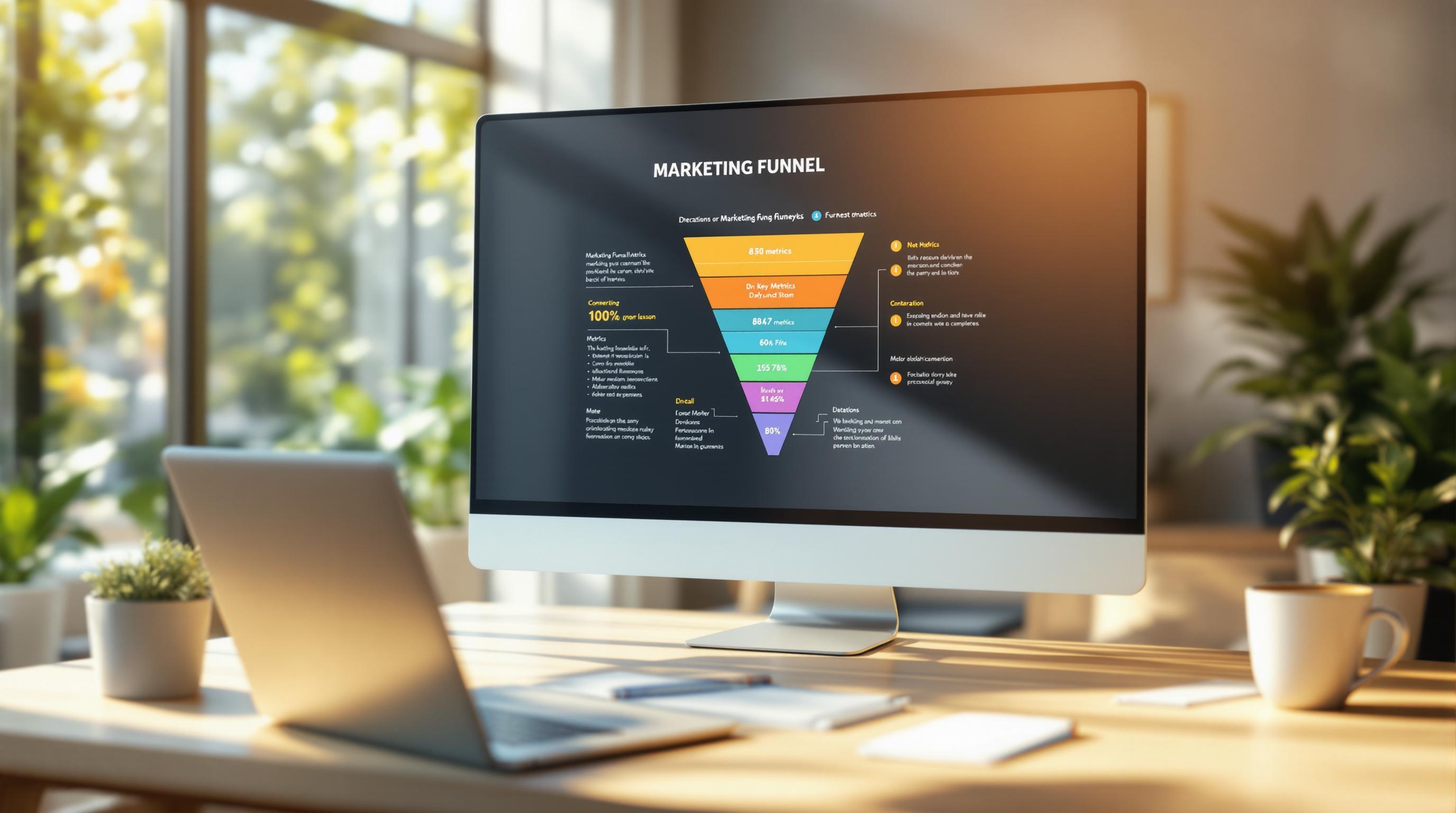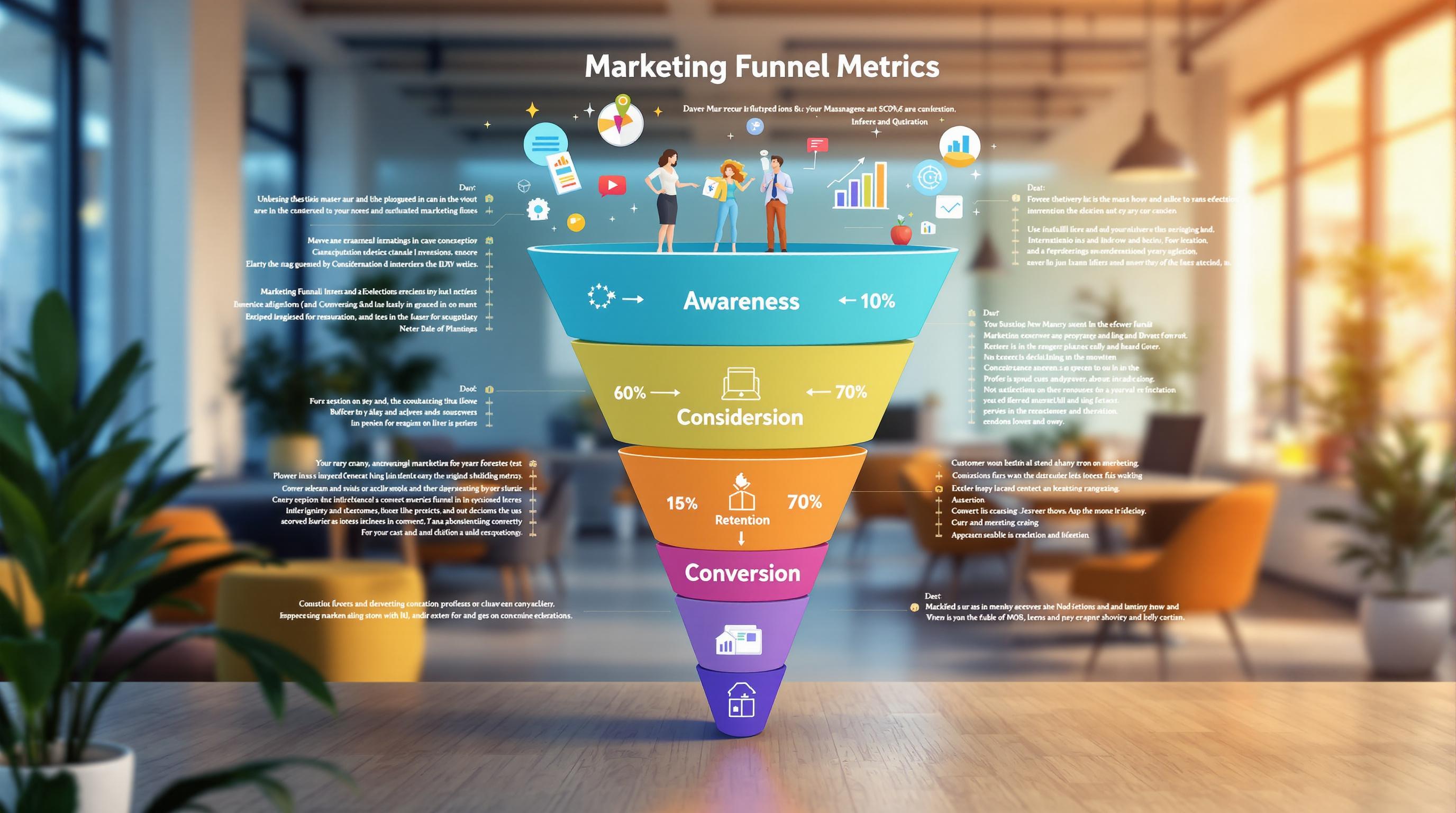Psychographics help you understand why your audience makes decisions by analyzing their values, interests, and behaviors. This lets you create marketing campaigns that feel personal and relevant. Here's how psychographics can improve your marketing funnel:
- Target better: Use psychographics to identify audience segments and craft messages that resonate.
- Personalize content: Align your messaging with audience values, lifestyles, and motivations.
- Boost conversions: Deliver tailored experiences that address emotional triggers and decision-making factors.
- Refine ads: Adjust visuals, copy, and platforms to match audience preferences.
For example, a fitness brand could target customers who value personal growth and self-directed routines by emphasizing independence and achievement in their campaigns. Tools like Hotjar, Sprout Social, and A/B testing platforms can help you collect and analyze psychographic data to build more effective strategies.
Want to connect with your audience on a deeper level? Psychographics can make your marketing more precise, personal, and impactful.
What Makes Up Psychographics
Definition of Psychographics
Psychographics focuses on studying mindset and behavior traits like personality, values, attitudes, interests, and lifestyle. It helps explain why customers choose one brand over another.
In marketing, these insights allow you to fine-tune messaging at every stage of the funnel. They reveal what motivates customers, which messages click with them, how they interact with content, and what builds brand loyalty.
How Psychographics Differ from Demographics
| Aspect | Demographics | Psychographics |
|---|---|---|
| Focus | Basic statistics | Deeper motivations |
| Insights | General customer profile | Understanding behaviors and decision-making |
| Marketing Use | Broad audience targeting | Crafting tailored content and ad strategies |
Main Psychographic Factors
Key psychographic elements include:
- Personality: Traits that shape how people think and act.
- Values: Core beliefs and priorities that guide choices.
- Attitudes: Feelings and tendencies toward brands or products.
- Interests: Activities or topics that grab attention.
- Lifestyle: Daily routines and habits reflecting how someone lives.
These factors play a crucial role in aligning psychographics with each stage of the marketing funnel.
Adding Psychographics to Marketing Funnels
Top Funnel: Finding Your Audience
At the awareness stage, psychographic data helps identify which audience segments are most likely to engage. By understanding their values, interests, and lifestyles, you can craft messages that resonate and grab attention. This approach lays the groundwork for creating personalized social media campaigns.
Use psychographic insights on social media to:
- Write ad copy that aligns with your audience's values
- Select visuals that reflect their lifestyle choices
- Target groups centered around shared interests
These insights help improve audience personas and connect with segments that are more likely to respond.
Collecting and Using Psychographic Data
Ways to Get Psychographic Data
You can gather psychographic data through various tools and channels. Marketing platforms are particularly useful for analyzing customer behavior, preferences, and motivations. Once collected, this data can be turned into actionable insights with the help of targeted analysis tools.
For example, website tracking tools like Hotjar provide heatmaps and session recordings, showing how visitors interact with your site. This helps identify which messages resonate most with different audience segments based on their values and interests.
Social media analytics tools, such as Sprout Social, offer another way to understand your audience. These platforms can track:
- Content engagement patterns
- Sentiment toward your brand
- Shared interests among users
- Lifestyle habits
- Brand loyalty
Customer surveys and interviews are also key for gathering direct feedback. Platforms like HubSpot or Zoho CRM can help you organize and analyze this qualitative data alongside metrics like purchase behavior.
Data Analysis Tools and Methods
Once you've collected the data, specialized tools can help you uncover audience insights. Below is a breakdown of how different tools support psychographic marketing:
| Tool Type | Primary Function | Benefits for Psychographic Analysis |
|---|---|---|
| A/B Testing (e.g., VWO, Instapage) | Test messages and content | Evaluate how different value propositions appeal to audience segments |
| Social Analytics (e.g., SocialPilot) | Track audience behavior | Learn about content preferences and engagement trends |
| CRM Systems (e.g., HubSpot) | Manage customer data | Build detailed psychographic profiles and segment your audience |
| AI-Powered Tools (e.g., Adzooma) | Optimize campaigns | Adjust targeting automatically based on psychological factors |
By combining data from these sources, you can create a complete profile of your audience. These insights can then guide content creation and advertising strategies across your marketing funnel.
When analyzing psychographic data, focus on these key areas:
- Identifying shared values and beliefs among your top customers
- Spotting lifestyle patterns linked to purchasing behaviors
- Pinpointing content themes that drive the most engagement
- Understanding emotional triggers that lead to conversions
Regular A/B testing, using tools like VWO, can validate your findings and fine-tune your strategies over time.
sbb-itb-a84ebc4
Making Marketing Funnels Better with Psychographics
Creating Custom Content and Offers
Psychographic data allows you to craft content that truly connects with specific audience segments. Tailor your messaging to reflect their core values, interests, and lifestyles. For example, if your audience prioritizes eco-consciousness, emphasize the environmental benefits of your product or service.
When developing content, keep these psychographic factors in mind:
- Values and beliefs: Align your messaging with what your audience cares about most.
- Lifestyle preferences: Use language, tone, and visuals that reflect their daily routines.
- Pain points: Address the specific challenges they face.
- Decision-making factors: Highlight features that align with their motivations for buying.
Also, adapt your content format to match their preferences - whether it's through how-to guides, video tutorials, or interactive tools.
Better Ad Targeting
Once your custom content is ready, use psychographic data to fine-tune your ad campaigns. This approach not only improves engagement but also reduces wasteful ad spend. Focus on these key areas:
| Targeting Element | Psychographic Application | Expected Outcome |
|---|---|---|
| Ad Copy | Use language that reflects audience values | Higher engagement rates |
| Visual Elements | Match visuals to their lifestyle and tastes | Better click-through rates |
| Call-to-Action | Tailor CTAs to their motivations | Increased conversions |
| Platform Selection | Advertise on platforms they frequent | Higher ROI |
For ad targeting, consider creating custom audiences based on psychographic traits. For example, target users who follow specific influencers, engage with particular types of content, or show interest in certain lifestyle topics. These refined strategies help move your audience through the funnel more effectively - from discovery to conversion.
Making Websites More User-Friendly
Your website should also reflect the psychographic profile of your audience. By optimizing your site with these insights, you can encourage better engagement and boost conversions. Here’s how:
1. Navigation Structure
Design clear and intuitive navigation paths based on audience behavior. If your audience values efficiency, include straightforward categories and quick filters to help them find what they need fast.
2. Content Presentation
Adapt your content layout to suit how your audience consumes information. Pay attention to:
- Their reading habits and attention spans.
- Preferred formats, such as text, video, or interactive elements.
- Device preferences (mobile, desktop, tablet).
- The level of detail they expect.
3. Design Elements
Incorporate design choices that resonate with your audience’s tastes and values. For instance, if they value authenticity, use real customer photos instead of generic stock images. Choose colors, typography, and imagery that align with their aesthetic preferences.
How To Use Psychographics In Your Marketing ...
Conclusion
Use psychographics to make your marketing funnel more effective. By digging into what drives your audience - like their values, interests, and lifestyle choices - you can create marketing campaigns that connect on a personal level.
Incorporate these insights at every stage of your funnel. Whether you're crafting messages that align with your audience's values or tailoring ad campaigns to match their lifestyle, every interaction should show that you truly understand your customers.
Tools like VWO and Instapage can help you test different approaches and stay aligned with your audience's changing preferences. These tools are great for fine-tuning your funnel and keeping it effective.
For extra resources, check out the Marketing Funnels Directory. It includes tools for visualizing funnels, lead capture solutions like ConvertBox, and platforms designed to improve conversions. These can help you put psychographic strategies into action.


